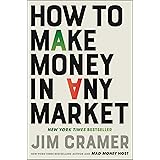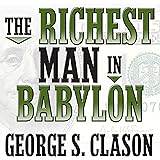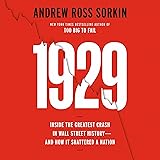The precious metal gold is once again capturing significant investor attention. Its value has surged, leading many to question if this rally is sustainable. Understanding the forces behind gold’s ascent is crucial for informed decision-making. This article explores the current gold market, delving into its drivers, investment options, and future outlook, building upon the insights shared in the video above.
The conversation around investing in gold has intensified. Gold has historically acted as a safe haven asset. Now, its narrative is gaining considerable momentum. Investors are witnessing gold prices reach multi-year highs. Gold ETFs are experiencing a flood of inflows. This follows a period where gold doubled in value. Some observers interpret this as continued strength. However, others detect signs of a stretched rally. Let us explore what fuels this impressive ascent and assess its potential trajectory.
What is Fueling the Current Gold Rally?
A convergence of factors drives the current gold rally. One significant element is the growing demand for diversification. Today’s market exhibits considerable concentration risk. This is especially true among large-cap stocks. Investors seek to balance their portfolios. Gold has greatly benefited from this shift. Other alternative assets, like Bitcoin and various commodities, also gained. Almost $30 billion has flowed into physical gold ETFs this year alone.
Another powerful driver relates to interest rates. A new rate-cutting cycle appears on the horizon. Gold is a non-yielding asset. It typically struggles when interest rates are high. Yielding assets offer better returns in such environments. However, lower rates make gold more appealing. Its opportunity cost is improved. This structural strength provides a compelling tailwind. The appeal of investing in gold becomes greater.
Gold’s Future: Profit-Taking or Lofty Projections?
The sustainability of the current rally is a key concern. Profit-taking might occur at these elevated levels. This is often seen as the year approaches its end. Portfolio rebalancing activities can also exert pressure. Many investors adjust their holdings. Such adjustments can lead to some selling. These actions are common in robust market conditions.
However, major financial institutions hold optimistic views. Firms like JPMorgan and Goldman Sachs have issued lofty projections. They forecast gold potentially reaching $4,000 an ounce next year. Goldman Sachs even suggests $5,000 an ounce is possible. This depends on specific economic alignments. Continued concerns about the economy, GDP growth, and inflation are factors. These projections indicate potential for further upside. An additional 7-10% gain might be realized. Therefore, the gold rally could persist for some time.
Understanding Gold’s Role in Portfolio Diversification
Gold has long been valued for its diversification benefits. It often shows a low correlation with traditional assets. This means it may move independently of stocks and bonds. Such independence provides a hedge against market volatility. In times of economic uncertainty, gold can maintain its value. It acts as a protective asset. Investors include gold to mitigate overall portfolio risk. This strategy strengthens a portfolio’s resilience.
Furthermore, gold protects against inflation. Its intrinsic value tends to rise during inflationary periods. Fiat currencies can lose purchasing power. Gold, however, preserves wealth. This makes it an attractive option. It safeguards investment value over the long term. Diversification is key for any balanced portfolio. Gold often serves this critical function well.
Exploring Alternative Gold Investment Strategies
Warren Buffett famously termed gold a “sterile asset.” His reasoning highlighted its lack of income or yield. Yet, modern investment vehicles offer new ways to engage with gold. Today, investors can generate income from gold holdings. This is achieved through innovative ETF structures. These funds employ options strategies. They provide exposure to gold itself. Simultaneously, they create regular distributions.
ETFs like Simplify YGLD or Neos IAU are examples. These funds provide gold exposure. They also generate double-digit distribution rates. This offers an appealing combination. Investors get gold’s traditional benefits. They also gain periodic income. This approach addresses Buffett’s critique directly. Other ETFs combine gold with various assets. These multi-asset portfolios provide broader diversification. They broaden the scope of investing in gold.
The Disconnect: Gold Miners vs. Gold ETFs
Gold mining companies have shown strong performance this year. Their financial health has greatly improved. Balance sheets are now much stronger. These companies operate more efficiently. Their earning seasons reflect these positive changes. Operational efficiencies boost their profitability. This indicates a robust underlying industry.
However, gold miner ETFs have lagged behind. This creates a puzzling disconnect. Miners are considered equity plays. They carry higher risk profiles. Their stock prices can be volatile. They tend to follow broader equity market movements. Gold, conversely, is perceived as a safe haven. It protects against market downturns. The demand for gold as a diversifier has not translated fully. Investors have not flowed into the riskier miner space. This highlights the perceived difference in risk.
Is It Too Late to Join the Gold Rally?
Many investors on the sidelines ponder entry timing. Current macro drivers suggest continued upside for gold. Interest rates are projected to decline. This factor remains firmly in place. Concerns about job market stability persist. Inflation fears have not entirely dissipated. GDP growth rates have moderated. These economic factors all support gold’s role. They underpin its safe haven appeal.
Therefore, it appears not too late to enter the market. The macro environment favors gold. While another 40% surge is unlikely, further gains are expected. Current projections indicate substantial upside room. Investors can still benefit from the ongoing momentum. Thoughtful consideration of entry points is always wise. The long-term outlook for investing in gold remains positive.
Gold and Bitcoin: A Modern Diversification Debate
Gold and Bitcoin are often discussed as rival havens. One is physical, the other digital. Opinions are sharply divided on their roles. Many view Bitcoin as a risk asset. It experiences significant price volatility. It is not always considered a true safe haven. However, both assets offer powerful diversification benefits. They serve as alternatives to traditional investments.
In today’s ETF landscape, owning both is possible. Some funds combine exposure to both assets. For example, BTGD offers a unique proposition. It provides exposure to both Bitcoin and gold. For every dollar invested, one gains $2 of exposure. This represents $1 in Bitcoin and $1 in gold. Such clever strategies allow investors to “have it all.” This dual approach caters to modern portfolio needs. It reflects evolving views on diversification and the gold rally.











